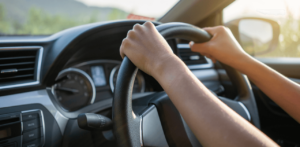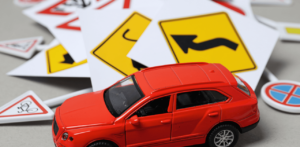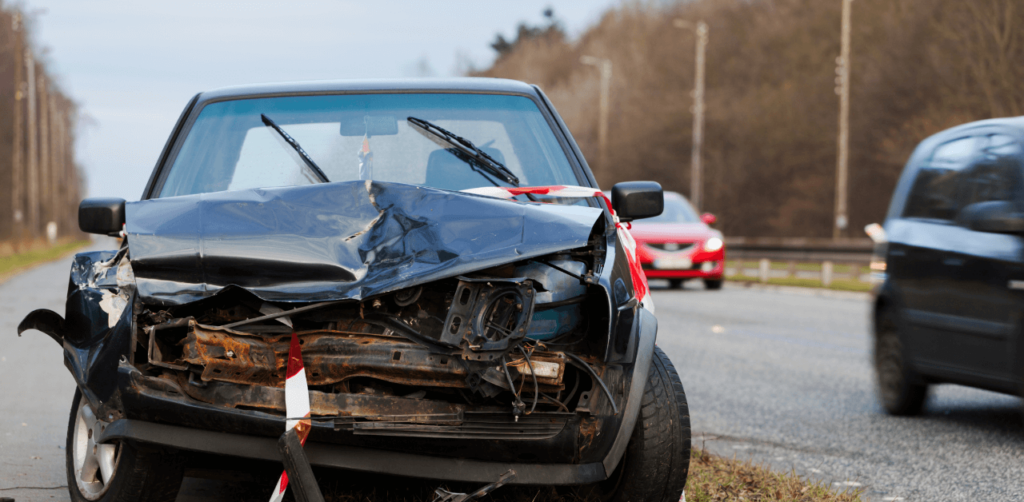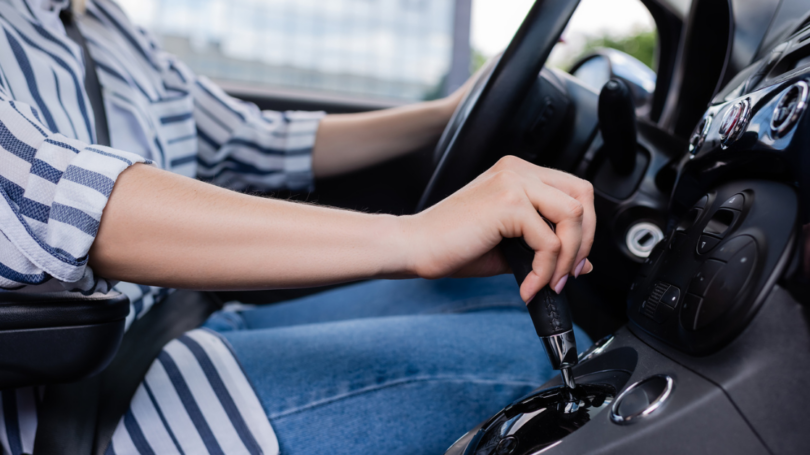Every driver must stay safe on the road. Every trip—whether a quick drive to the store or a long journey on the highway—requires careful attention, good habits, and a keen sense of one’s surroundings.
Each time we get behind the wheel, we face potential hazards from other vehicles, changing weather, and unexpected road conditions. Practicing safe driving means more than just following the rules; it involves being mindful of distractions, keeping a steady focus on visibility and road traction, and always securing your safety belt.
This guide covers essential tips to help prevent collisions, from managing distracted driving to sharing the road responsibly with other drivers. We’ll explore the importance of safe driving practices like maintaining safe distances, securing parked vehicles, and understanding common collision risks in highway driving.
Defensive Driving – How to Stay Safe on the Road
 Defensive driving is about staying alert, staying safe, and understanding the road. Every time you get behind the wheel, you’re responsible not just for your own safety but for those around you. Defensive driving isn’t just about reacting to potential hazards. It’s about staying prepared and making conscious choices to avoid car crashes and rear-end collisions.
Defensive driving is about staying alert, staying safe, and understanding the road. Every time you get behind the wheel, you’re responsible not just for your own safety but for those around you. Defensive driving isn’t just about reacting to potential hazards. It’s about staying prepared and making conscious choices to avoid car crashes and rear-end collisions.
Start with the basics: wear a safety belt every time, and ensure everyone in your car does too. A seat belt is your first line of defense if things go wrong. Next, follow speed limits, especially in heavy traffic or poor weather conditions. Driving at a safe speed allows you to stop safely if the car ahead stops suddenly.
Keeping a safe following distance is essential in all situations, especially on highways and during bad weather. This distance gives you time to respond to sudden stops or turns from other vehicles, reducing the risk of rear-end accidents. For night driving, proper lane management is key. Stick to the right lane unless passing, and avoid unnecessary lane changes to keep things predictable. Use your turn signals early, giving other drivers time to react.
Distractions, like using a cell phone or eating, are a leading cause of car crashes. Staying focused means keeping both hands on the wheel and your eyes on the road ahead. Even glancing away to check a notification can put you and others at risk. Defensive drivers avoid distractions, ensuring their attention stays where it belongs—on the road.
Awareness of blind spots also plays a big role in driving safely. When changing lanes, always check your mirrors and blind spots to prevent collisions with other cars. When parking, choose well-lit areas to protect against parked vehicle theft and leave enough space to avoid parked car damage. In parking lots, drive slowly and pay close attention to other cars and pedestrians.
Ultimately, practice defensive driving daily by predicting the moves of other drivers and maintaining a responsible attitude.
Pay Attention to Road Conditions – Look Out for Hazards Ahead of Time
Driving safely goes beyond knowing the basics—it’s about always paying attention to road conditions, anticipating potential hazards, and adjusting as you go. Conditions can change rapidly, whether you’re on a busy highway, in a poorly lit parking lot, or simply in a neighborhood. Staying alert, especially during bad weather or in areas with heavy traffic, can prevent accidents and save lives.
1. Watch for Road Hazards
Driving safely means constantly scanning for hazards that may affect your journey. Spotting the road ahead allows you to anticipate changes—like a sudden yellow light or even a slow-moving vehicle. Always maintain a safe speed and keep an eye on other vehicles around you, especially when driving on the highway, where cars change lanes frequently. Avoid unnecessary lane changes and respect traffic rules, as this can help prevent accidents.
2. Be Ready for Bad Weather and Poor Visibility
Rain, fog, and snow significantly reduce visibility and road traction, increasing the risk of losing control. In such weather, slow down and keep a safe distance from the car ahead. If visibility drops or road conditions worsen, stay calm and avoid any sudden moves. When inclement weather hits, stop safely when needed and use emergency lights if you pull over. Regular maintenance, like keeping tires and brakes in good condition, also ensures your car is ready for these situations.
3. Focus on Defensive Driving
One of the leading causes of accidents is driver distraction. Staying focused and driving with a responsible attitude keeps you ready for any sudden changes, like red lights or pedestrians. Avoid distractions like mobile devices, and always use your seat belt. Check for blind spots before changing lanes and give extra room to larger vehicles that may have limited visibility.
4. Recognize Traffic Signals and Follow the Law
Traffic laws exist to keep everyone safe. Recognize signals, pay attention to road signs, and follow the rules. When approaching an intersection, be cautious, especially at yellow lights, which signal that the light is about to turn red. In emergency situations, having legal guidance may be necessary, but prevention is key. Stick to the rules, avoid underage drinking, and always drive sober.
5. Plan Ahead in Parking Lots and City Streets
In parking lots or crowded streets, lower your speed, stay aware of pedestrians, and park in well-lit areas to avoid any potential hazards. When pulling out, check blind spots, and always look around before reversing. Simple habits like these keep you and others safe.
Avoid Distractions While Driving – Keep Your Focus on the Road
Avoiding distractions while driving is also an important safety tip that drivers should follow to avoid a car accident. In today’s world, there are factors that lead to distracted driving. As more technology becomes available, drivers have an increased number of options for in-vehicle entertainment, social media access, and navigation assistance.
However, while these features can be useful and entertaining, they also have the potential to take your focus away from the road. You should avoid using your phone, eating or drinking, playing with the radio, or engaging in other activities that can distract you from your driving.
By maintaining focus on the road and avoiding distractions, you can help reduce your risk of getting into a car accident. Whether you are driving in city traffic or on the freeway, always be alert and aware of your surroundings and avoid taking your attention away from driving for even a second.
Follow Rules of the Road – Know Local Laws and Regulations
 Following the rules of the road is essential for avoiding car accidents, as they provide guidelines to keep everyone safe. Knowing and abiding by local laws and regulations is a key part of being a responsible driver. By understanding the rules of the road, you can avoid unsafe driving practices that could lead to a collision.
Following the rules of the road is essential for avoiding car accidents, as they provide guidelines to keep everyone safe. Knowing and abiding by local laws and regulations is a key part of being a responsible driver. By understanding the rules of the road, you can avoid unsafe driving practices that could lead to a collision.
For instance, in many areas, using a cell phone while driving is illegal. If you are caught engaging in this activity, you could be subject to fines or other penalties. It is important to understand and follow all the rules of the road to avoid an unnecessary accident.
Keep Your Vehicle Maintained – Regularly Check Tires, Lights, Brakes, etc.
One of the best ways to avoid being in a car accident is to keep your vehicle properly maintained. Regularly checking tires, brakes, lights, and other parts of the vehicle is essential for safe driving. Tires should be inspected for wear and tear at least once a month, as worn tires can increase the likelihood of a skidding or collision.
Additionally, you should make sure that all lights are working properly and are clean. Dirty headlights or taillights can reduce visibility and lead to accidents. Always keep your brakes in good condition by having them inspected regularly for signs of wear and tear, as worn brakes could potentially cause your vehicle to skid or lose control.
What To Do If Accident Happens

Accidents can be overwhelming, but knowing what to do can help you stay calm and make the situation more manageable. Here’s a simple guide to follow if you find yourself in an accident:
1. Check for Injuries
Safety is the top priority. First, check yourself and your passengers for injuries. If you or anyone else is hurt, call 911 immediately. Even if injuries seem minor, it’s best to get medical help right away.
2. Move to a Safe Location
If it’s safe, move your car to the shoulder of the road or a nearby safe area. This can help prevent rear-end crashes with oncoming traffic. However, if the accident is severe, leave your vehicle where it is and move yourself and passengers to a safe spot away from traffic.
3. Turn on Hazard Lights
Use your hazard lights to warn other drivers, especially if the accident occurred at night or in low-visibility conditions. Hazard lights help prevent additional rear-end collisions by signaling other drivers to slow down.
4. Call the Police
In most places, you’re required to report accidents, even minor ones. The police will document the accident and create an official report, which can be useful for insurance purposes. When the officers arrive, stay calm and answer their questions accurately. Avoid admitting fault, as this could impact your claim later.
5. Exchange Information
Swap contact and insurance information with the other driver(s) involved. Key details to share include:
- Full names and contact numbers
- Insurance company names and policy numbers
- Driver’s license and license plate numbers
- Vehicle make, model, and color
If there are any witnesses, ask for their contact information, too, as they may be able to provide helpful information later.
6. Document the Scene
Take photos of the vehicles, damage, license plates, and any relevant road signs or traffic signals. Try to capture the entire scene from multiple angles to create a visual record of the accident. These photos can be essential for insurance claims and can help determine fault if it’s unclear.
7. Avoid Discussing Fault
Avoid blaming or admitting fault at the scene. Instead, stick to the facts when speaking to the other driver, witnesses, or the police. Details like “I was going the speed limit” or “the light turned green” are more helpful than admitting fault, as your insurance company will determine who is liable.
8. Notify Your Insurance Company
Report the accident to your insurance company as soon as possible. Many insurers have specific timelines for filing claims, and prompt reporting can speed up the process. Provide your insurance representative with all the details you collected, including photos and the police report number.
9. Seek Medical Attention
Even if you feel fine, some injuries from car accidents, like whiplash or internal injuries, might not show symptoms immediately. Seeing a doctor can ensure you’re not overlooking a hidden injury.
10. Reflect on Driving Habits to Avoid Future Accidents
Reflect on your driving habits to avoid future accidents. Practicing defensive driving, keeping a safe following distance, and staying alert, especially when the light turns green, can reduce the risk of rear-end crashes. Observing speed limits and being cautious in heavy traffic areas also adds to your safety.
Our Attorneys Can Assist You
Car accidents are common on the roads and can lead to serious physical, emotional, and financial harm. When a car accident occurs, it is important to seek assistance from a skilled attorney.
The attorneys at Temple Injury Law understand how traumatic and complicated car accident cases can be, and they will provide knowledgeable legal advice and representation to help you receive the compensation you deserve.
Contact us today for more information on how we can assist you with your car accident case.

Jeff Temple focuses his practice in the area of personal injury. As a skilled personal injury attorney, he handles a broad range of cases including motor vehicle accidents, premises liability, and wrongful death. He is a graduate of the Radford University, he later attended the University of Miami School of Law and studied abroad at University College London. Upon graduating, Jeff relocated to Las Vegas and founded Temple Injury Law in 2022.

